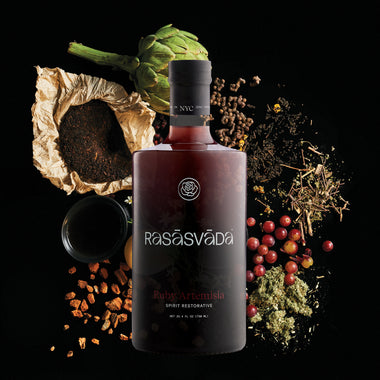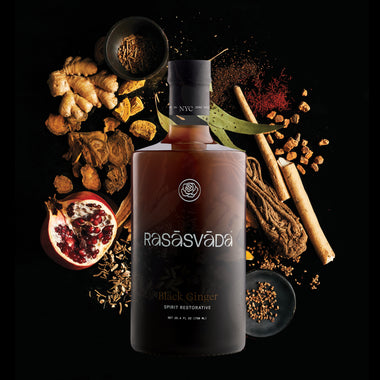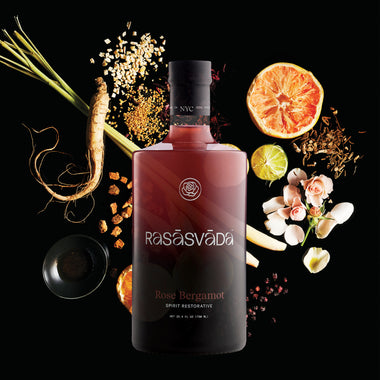Chrysanthemums, sometimes known as "mums," are vibrant, sweet-tasting flowers known for their beauty and healing properties. Native to Asia and northeastern Europe, chrysanthemums range in color from golden yellows to deep purples. The botanical name is Chrysanthemum morifolium, though several related species are used in traditional and modern herbal medicine.
It's important to distinguish between ornamental chrysanthemums used in floral arrangements and the medicinal varieties. While they may look similar, the medicinal types—most often C. morifolium—are grown and harvested specifically for their therapeutic compounds and are edible. Ornamental chrysanthemums are not (and should not be ingested).
Botanical Overview
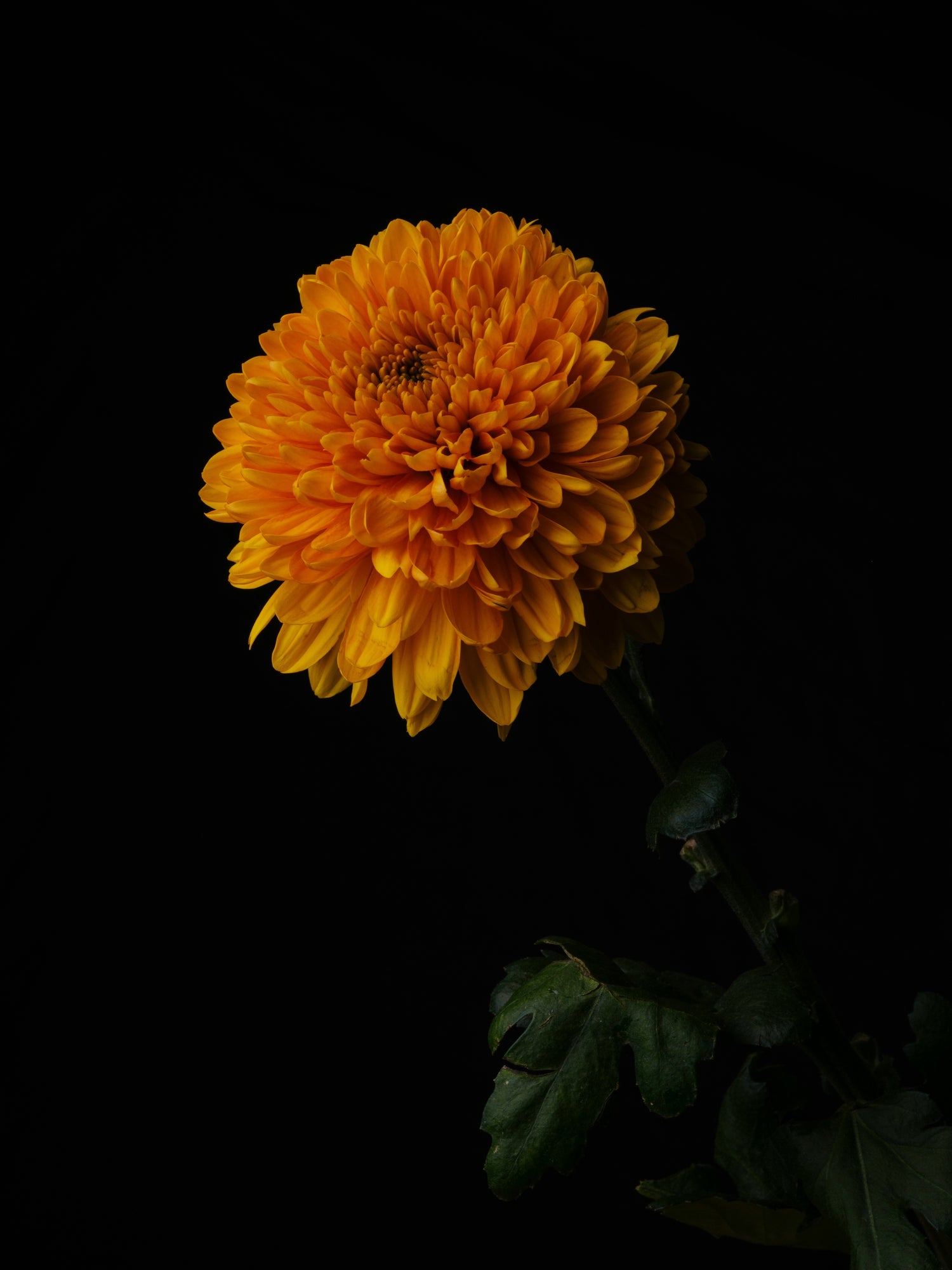
Botanical name: Chrysanthemum morifolium
Family: Chrysanthemum belongs to the Asteraceae family, also known as the daisy or sunflower family. This is one of the largest plant families and includes other well-known plants such as echinacea, dandelion, calendula, and chamomile.
Common name: Chrysanthemum, Mum or Mums (especially in the U.S.), Ju Hua (菊花) – traditional Chinese Medicine name, Japanese chrysanthemum, “Autumn flower” (referencing its typical bloom time)
Location: Global; derived from Asia
History of Chrysanthemum
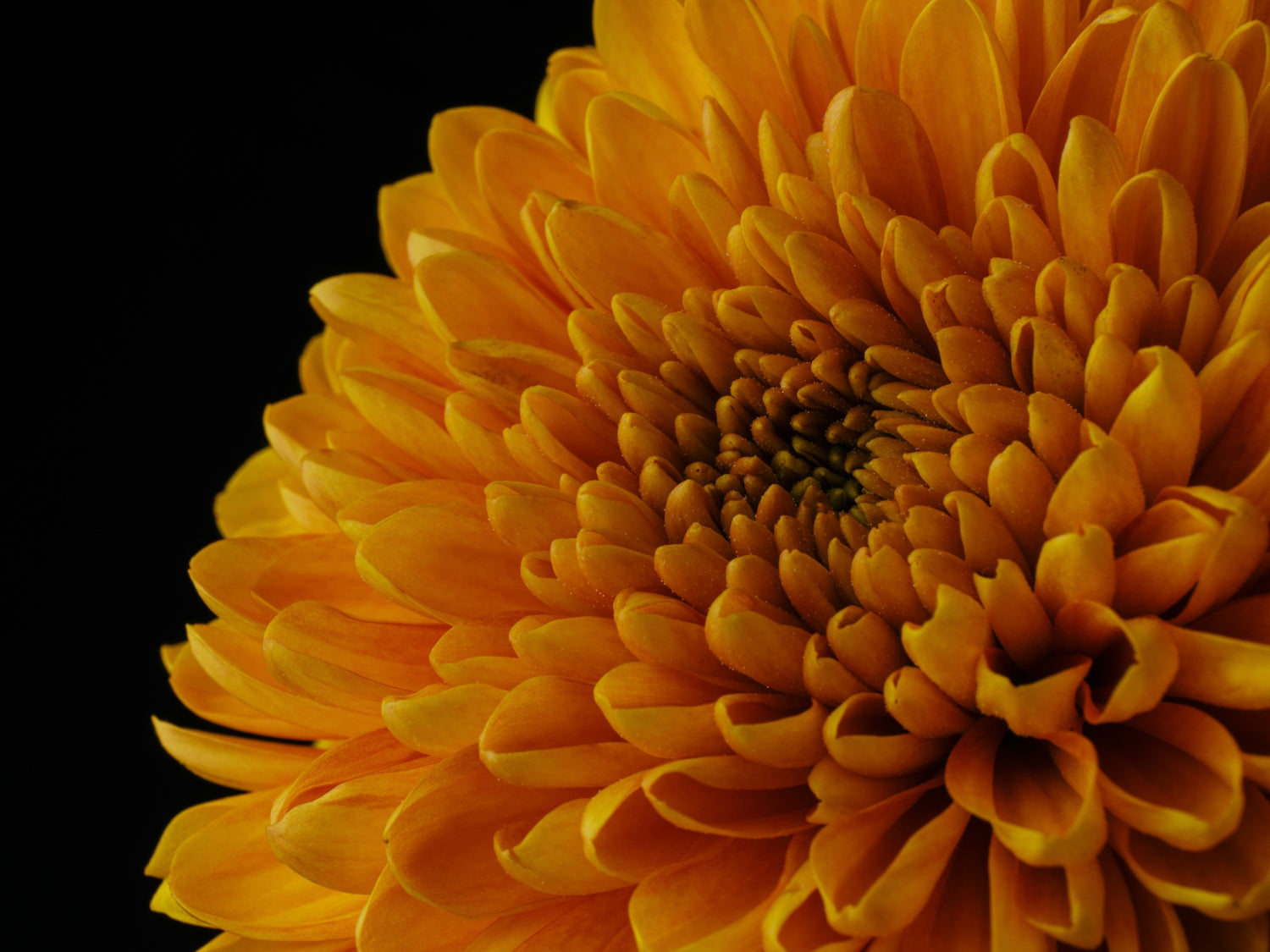
Chrysanthemum has been cultivated in China for over 3,000 years, dating back as early as the 15th century BCE. It spread to Japan by the 8th century and later reached Europe in the 17th century. In Chinese culture, the flower symbolizes luck, longevity and vitality, while in Japan, it is the imperial flower and a symbol of the emperor.
Chrysanthemum in Traditional Chinese Medicine (TCM)
Known as jú huā in TCM, chrysanthemum is classified as a cooling herb that helps “dispel wind and heat.” It’s said to support the liver, lungs, and eyes—organs that, according to TCM theory, are often affected by internal heat or imbalances in “yang” energy.
- Cooling Effect on the Body: Chrysanthemum is known for its naturally cooling properties, both in TCM and modern herbal circles. In TCM, this means it may help reduce excess internal heat, often characterized by symptoms like inflammation or irritability, while balancing the Qi.
- Eases Various Ailments: Because of its anti-inflammatory nature, chrysanthemum has been used in traditional teas to relieve sore throats and reduce fevers, as well as headaches. One of the most famous uses, however, is for the eyes: chrysanthemum is believed to relieve dry, red, or itchy eyes “caused by heat or tension” energy in the body. Anecdotally and traditionally, it's used to relieve eye strain and mild tension headaches, particularly when consumed as tea. It also has a mild respiratory benefit of easing breathing during colds or allergic reactions (unless you’re allergic to the chrysanthemum!).
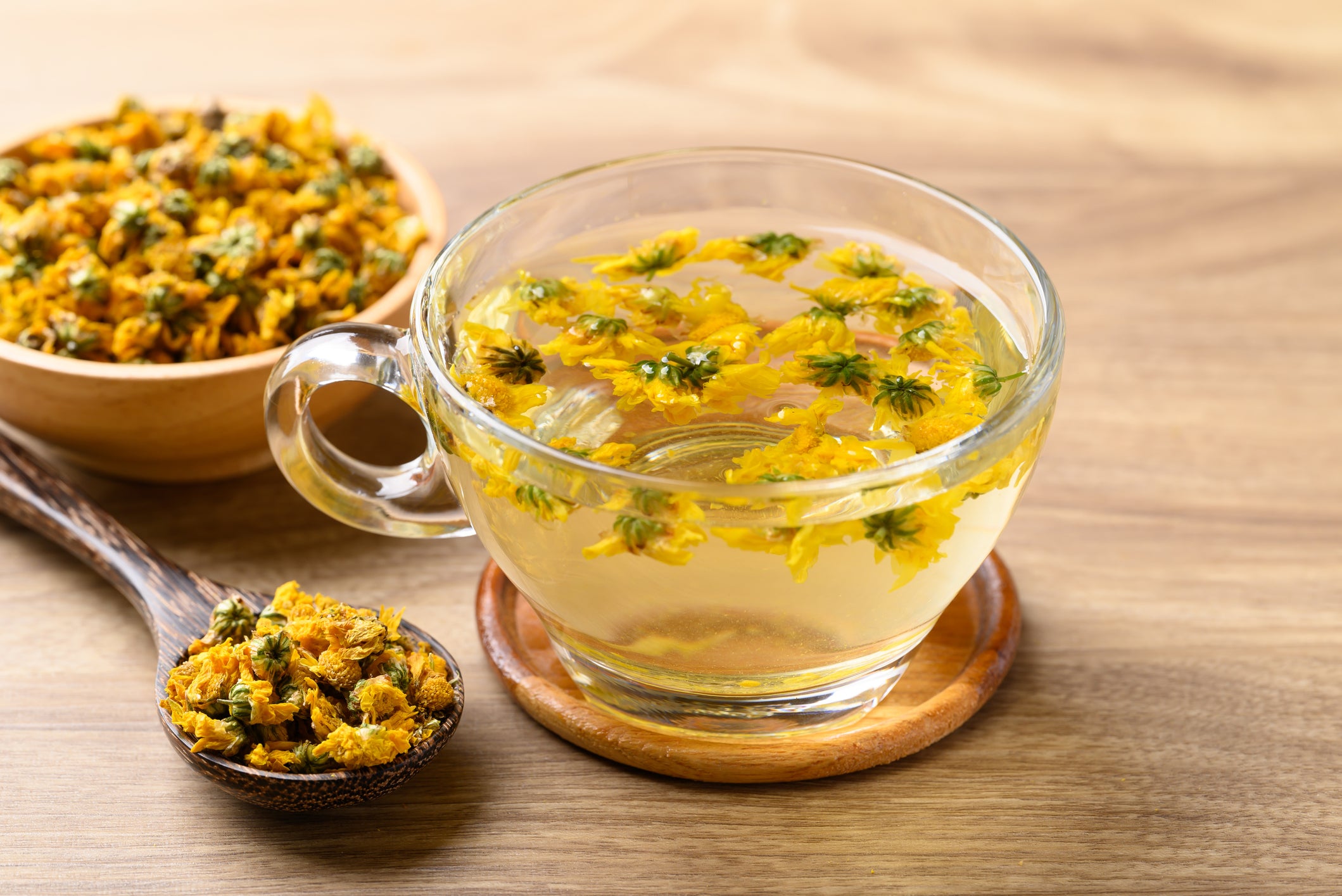
The Health Benefits of Chrysanthemum
Anti-Inflammatory and Antioxidant Properties
The most important benefit of the Chrysanthemum is that it contains several potent anti-inflammatory and antioxidant compounds. These properties may help neutralize free radicals, balance inflammation, and support overall health and longevity. The flower has also demonstrated mild antibacterial and antiviral activity in some studies. These effects may be the basis for the TCM use to treat common colds, flu, and sore throats (see above).
Preliminary studies on rats with high blood pressure indicate that chrysanthemum may help lower blood pressure and support heart health, thanks to its antioxidant profile. Human studies are not available at this time.
Read more: In our blog about Reishi mushrooms, Alexandra Sartori (MS Nutrition Science) writes: “Antioxidants are compounds that help prevent damage to cells and are linked to lower rates of disease.”
Hair and Skin Health
Chrysanthemum (C. morifolium) tea may support hair health indirectly, though it's not a primary hair tonic in herbal medicine. Because it’s rich in flavonoids, it can help alleviate stress that can lead hair thinning or hair loss, but there isn’t much in the way of studies that say C.morifolium helps hair growth and luster.
There is another chrysanthemum botanical family member called C. zawadskii var. Latilobum, and is more common in Korean herbal traditions and modern skincare, with growing research into its bioactive compounds. We do not currently use C. zawadskii.
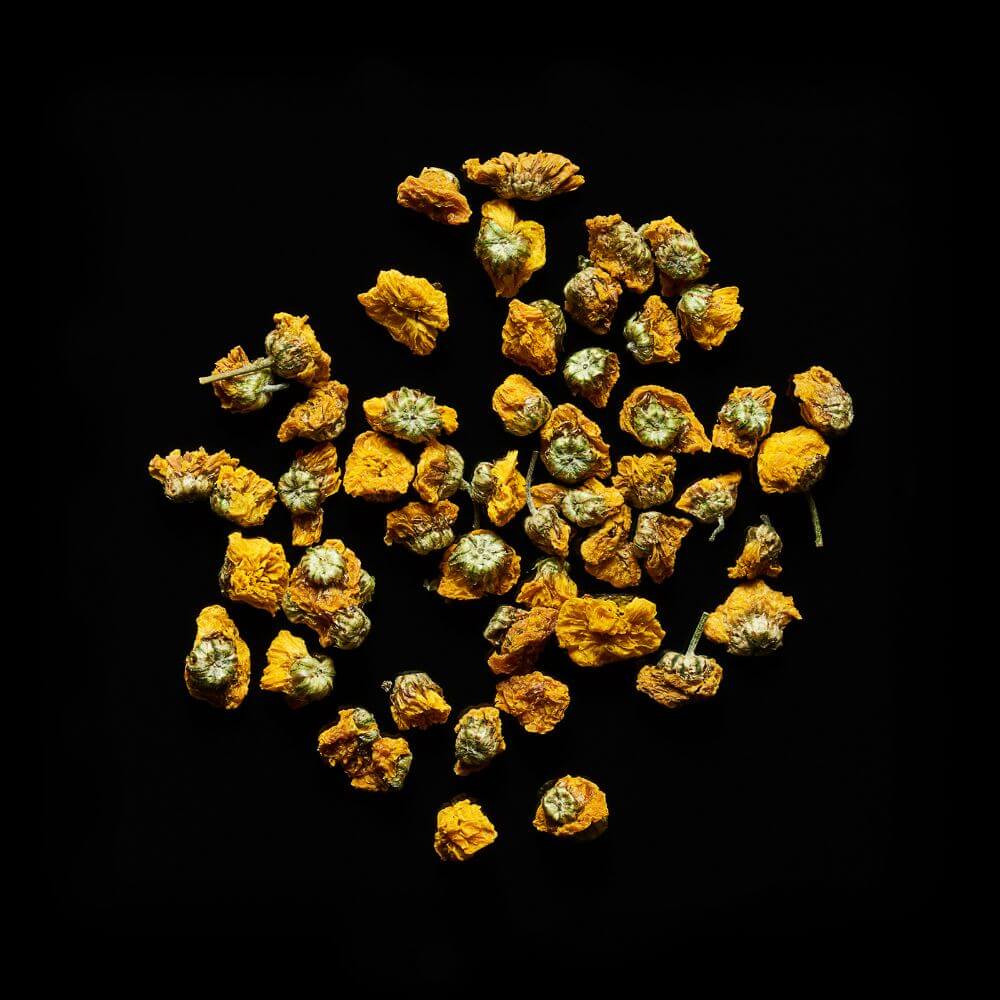
Chrysanthemum in Rasāsvāda
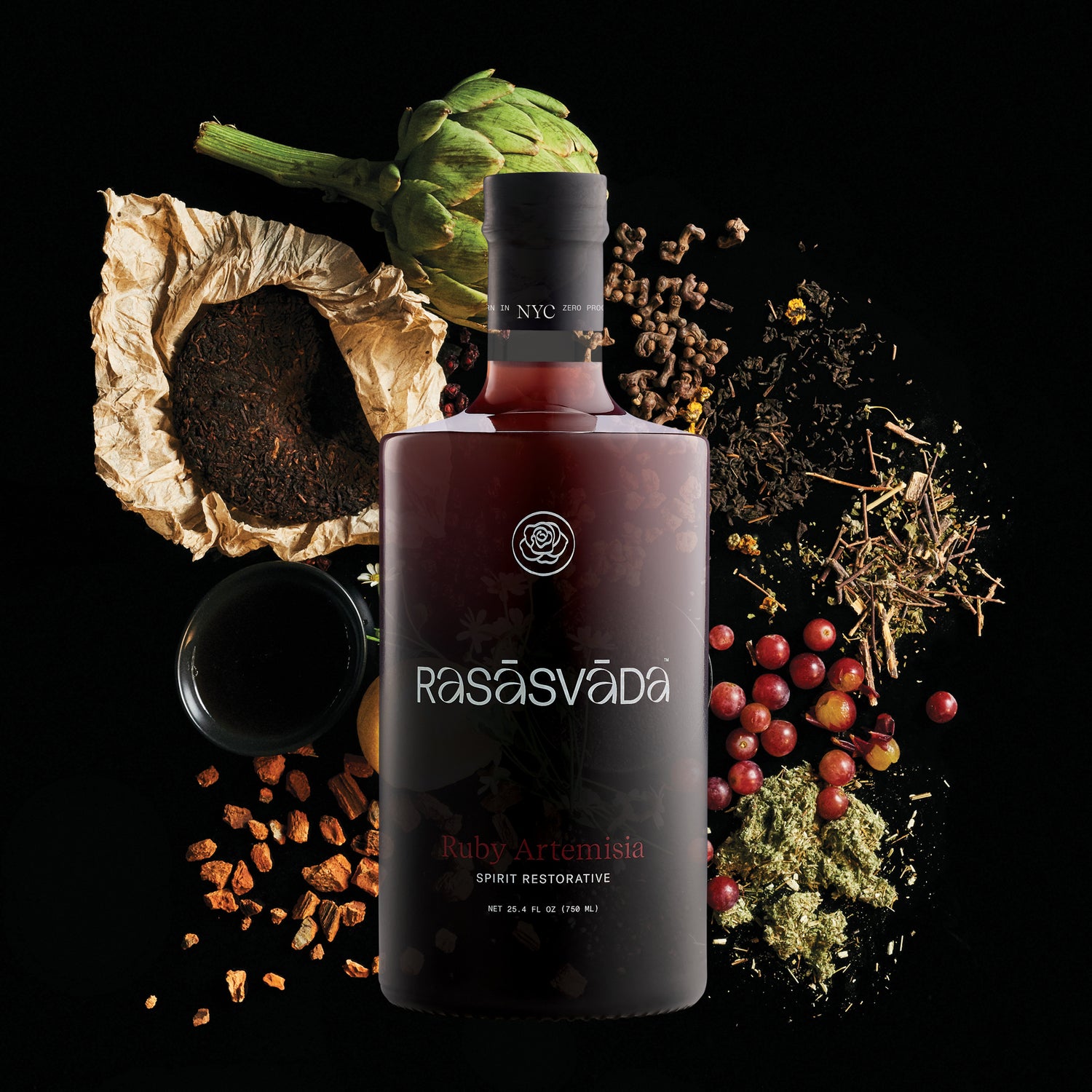
At Rasāsvāda, we include medicinal chrysanthemum in Ruby Artemisia sourced from South Korea for its cooling, calming properties and light floral flavor. It complements other ingredients like Schisandra and Maqui Berry, Yunnan Pu'erh tea, and red wine grape skins.
Flavor Profile: Bright, tart, and slightly sweet with a refreshing finish.
How to Use: Sip it hot or cold, blend it into a spritzer, or enjoy it as part of a daily herbal wellness ritual.
Key Takeaways
Chrysanthemum is a gentle yet powerful herb that has earned its place in both traditional and modern herbal wellness. Known primarily for its cooling, antioxidant, and anti-inflammatory effects, it's a valuable addition to a well-rounded self-care routine that benefits from medicinal teas and tonics.
FAQs
100% plants. 0% preservatives.


